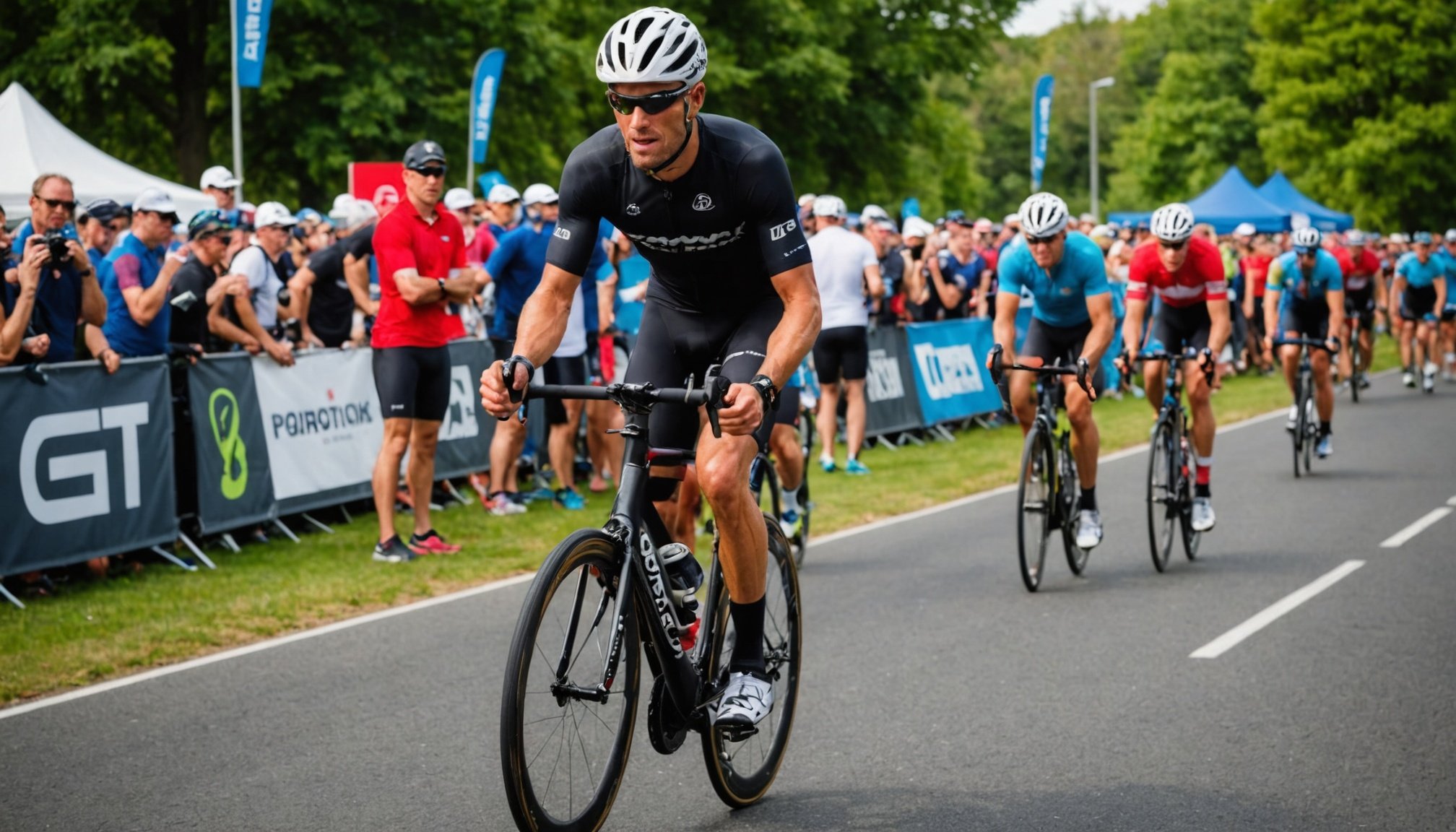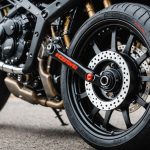Understanding the Importance of Transition Times
Transition times in triathlons can significantly affect race performance. These brief yet crucial moments involve switching from swimming to cycling and then to running. Effective transition strategies can make a profound difference.
A triathlete’s efficiency during transitions can notably influence overall race time. Consider a race scenario where the athlete is swift between segments. An optimised transition strategy ensures minimal time is wasted, boosting the athlete’s competitive edge. A well-planned strategy means athletes can often reduce these phases by several minutes, impacting not only their own performance but potentially their position on the leaderboards.
Also read : Top Power Exercises to Boost a Basketball Player”s Jumping Explosiveness
Statistics illustrate the importance of transition strategies. On average, athletes lose valuable seconds or even minutes due to poor planning and chaotic execution. For example, disarrayed equipment or unclear routines often lead to delays, directly affecting triathlon efficiency.
Successful triathletes understand the value of planning with precision. Coordinated practice of transition elements, such as gear placement and changing techniques, promotes fluid, seamless transitions. By focusing on these strategies, competitors improve their overall race performance.
In parallel : Maximize Your Performance: Essential Breathing Techniques for Adventure Racers at High Altitude
In summary, employing efficient transition strategies is not merely beneficial but vital. Those seconds shaved off in transitions can be the deciding factor between a podium finish and an average race day.
Swim-to-Bike Transition Strategies
A successful triathlon heavily depends on mastering the swim-to-bike transition. This often-overlooked phase can be a game changer if handled with precision. Let’s dive into key steps to streamline the process.
To begin, organise your transition area with meticulous planning. Arrange your gear—helmet, cycling shoes, and towel—in a logical sequence. This not only ensures a smoother changeover but also minimises confusion during the heat of the race.
Equipment management plays a crucial role here. Pre-clipping your cycling shoes onto your bike is a widely adopted technique among elites. This preps you for a flying mount, cutting down precious seconds. Don’t forget the quick-drying towel! It helps to wipe off excess water after the swim, preventing any discomfort during the bike leg.
Common pitfalls such as tangled gear or mislaid items can cost valuable time. A reliable strategy is to practice your triathlon training repeatedly. Rehearse the quick transitions and visualise the steps involved. This not only cements the routine but also builds confidence.
Avoid rushing! A cool head trumps hasty manoeuvres, ensuring you avoid accidents or penalties. Remember, a well-executed swim-to-bike transition can impact your overall performance significantly.
Bike-to-Run Transition Strategies
Making a smooth bike-to-run transition is crucial in a triathlon. This stage, often called the “brick,” can be a challenge, but with the right strategies, it can become seamless and efficient.
To begin with, establishing an efficient changeover is vital. Practising dismounts from your bicycle and swiftly changing into running shoes can save precious minutes. Position your gear strategically in the transition area so that everything is easily accessible.
Mentally and physically resetting during the transition can dramatically enhance your race experience. Taking a few deep breaths as you switch modes helps calm and refocus your mind. Additionally, engaging in light stretching or shaking out your legs while transitioning can ease the muscular tension built during cycling.
Accessories and gear play a significant role in optimizing transition speed. Consider investing in elastic lock laces for your running shoes to avoid time-consuming knots. Quick-dry towels can absorb sweat swiftly, enabling a more comfortable run. Further, race belts that can hold bib numbers make it easy to transition without having to pin numbers to clothing.
By adopting these strategies, you can move from cycling to running more effectively, setting yourself up for a strong finish in your race.
Common Mistakes in Transitions
When focusing on transition mistakes in a triathlon, it is crucial to understand the frequent errors that can occur, drastically impacting race times. Often, athletes overlook the small elements in transitions, causing unnecessary race errors. A key mistake is disorganisation; not having equipment laid out methodically can lead to time being wasted searching for items. Additionally, not rehearsing transitions during training sessions can result in slower performance on the race day.
The importance of integrating transition mistakes practice into training cannot be overstated. Practising the swift change from swimming to cycling and then to running can help refine this crucial part of the event. This not only enhances speed but also boosts confidence and reduces stress during the event itself.
Conducting a self-review of one’s transition performance is a beneficial step towards triathlon improvements. After each training session or race, take the time to assess what went well and identify areas for enhancement. Keep a log detailing times and reflections which can highlight patterns of race errors. By systematically improving transitions, athletes can significantly shave seconds or even minutes off their total race time, leading to better overall performance.
Learning from Experienced Triathletes
Gaining triathlete insights can be an invaluable asset to those aiming to improve their performance in this demanding sport. Knowledge from seasoned athletes provides expert advice that is not just theory, but tested in the heat of competition. Interviews and anecdotes from these experts often reveal performance tips that can transform your approach to triathlon racing.
One key aspect that experienced triathletes focus on is the art of transitions, which are the quick changes between swimming, cycling, and running. Techniques utilised by elite athletes to enhance transitions include pre-positioning gear for seamless access and honing mental focus to reduce transition time. A strategic layout of equipment can shave off valuable seconds, boosting overall race performance.
Moreover, seasoned triathletes highlight the importance of learning from real race experiences. For instance, adapting strategies based on varying weather conditions or unexpected obstacles can make a significant difference. These lessons stress the importance of anticipation and mental preparedness, advising newcomers to practice under conditions that mimic their race environments.
Incorporating these insights and techniques can equip novice triathletes with practical know-how to compete more efficiently and confidently. Understanding the nuances through expert advice is a game changer, offering a competitive edge in triathlon events.
Visual Aids and Tools for Better Transitions
Diagrams and videos play a crucial role in illustrating effective strategies for ideal transitions. Visual aids like these can break down complex actions into digestible steps, making it easier for learners to internalize and replicate movements. Diagrams provide a static representation, ideal for studying the nuances of each step, while videos offer dynamic visuals that display the fluidity and timing of transitions in real-time.
When considering training aids, transition mats and bags emerge as recommended tools. Transition mats offer a designated space to practice, allowing smooth exchanges and minimizing clutter. These can especially aid in sports or events where precision and speed are critical. Transition bags, on the other hand, help in organizing necessary equipment, ensuring swift and efficient transitions by eliminating time spent searching for items.
Additionally, technology provides modern methods to analyze and improve transition times. Wearable devices and smart sensors can track metrics such as speed, movement patterns, and efficiency. This data offers insights that are invaluable for enhancing performance, allowing users to tweak their techniques and strategies. Employing these technological aids can lead to marked improvements, fostering a deeper understanding of transition dynamics through precise feedback.
Understanding the Importance of Transition Times
In a triathlon, transition times are crucial moments that can significantly affect an athlete’s overall race performance. These are the periods between the swim, bike, and run segments, where speed and efficiency are essential. Mismanaging these moments can lead to unnecessary delays, impacting an athlete’s ranking.
One common mistake triathletes make during transition times is failing to plan ahead. Organising gear in an illogical manner results in lost time as they fumble for essentials. A chaotic transition area can lead to frantic searches, causing stress and lost seconds. Another frequent error is underestimating the importance of practicing transitions during training sessions, leaving athletes unprepared on race day.
Optimizing transition times offers significant benefits, pushing a competitor’s efficiency to the maximum. By incorporating transition drills into regular training, triathletes can enhance their proficiency. These practice sessions allow athletes to fine-tune coordinated gear changes and repetitive motions, ensuring these actions become second nature.
To boost triathlon efficiency, focus on improving these transition times. It’s not just about physical prowess in each segment of the race but also mastering these crucial interludes. Effective transition management can substantially improve an athlete’s overall performance, setting them apart from the rest of the competitors.
Equipment Organization Strategies
Efficient gear placement is essential for optimising transition time in any triathlon or multisport event. Properly arranging your equipment in the transition setup can significantly reduce hesitation and delays. Always start by identifying which pieces of gear you need for each phase. This ensures you set up only what’s necessary and avoid clutter.
Essential Gear for Efficient Transitions
Identify core items like running shoes, helmet, and bike gloves first. Position them where you can quickly grab and go. Make sure your bike is racked in a convenient spot for a smooth pickup and drop-off. Importantly, invest in compact backpacks or bags that enable easy access to different compartments.
Best Practices for Organizing Transition Area
Lay out your gear in the order of use. For example, place your bike helmet on top of your shoes if you’ll start with cycling. An overhead view of your setup can help spot clutter or inefficiencies. Label each section if necessary, especially in high-pressure situations.
Visual Aids to Enhance Transition Planning
Colours and symbols can be extremely useful in transition planning. For example, use a red ribbon on running shoes to distinguish them quickly. Symbols like arrows can remind you of your gear placement sequence. This visual cue can be a game-changer when seconds count.
Mental Preparation Techniques
Achieving the right race day mindset is crucial for optimal performance. One of the most effective techniques is visualization. Imagine the transitions you will make during the race; this helps reinforce mental focus and ensures smooth execution. Visualizing each step not only solidifies your plan but also boosts confidence.
Another key element is creating a pre-race routine. Your routine should be tailored to enhance mental clarity and reduce distractions. Include activities that calm your mind and focus your energy, such as light stretching or listening to music. The familiarity of a routine can be comforting, helping you enter the race day with a clear head.
Anxiety can often mar performance, but there are techniques to keep it at bay. Deep breathing exercises or mindfulness meditation can effectively reduce pre-race nerves. These practices help keep your mind centered and your focus sharp. Maintaining a balance between excitement and calm allows you to approach the race with a steady mindset, ready to tackle each challenge head-on.
Incorporating these mental preparation strategies ensures that when the race day arrives, you are not only physically prepared but also mentally primed for success.
Physical Techniques to Improve Transition Efficiency
Enhancing the effectiveness of transitions in athletic activities, particularly in multi-discipline sports like triathlons, is crucial for overall performance. Incorporating tailored transition drills and speed strategies can significantly impact an athlete’s results.
Key Drills for Practicing Transitions
Incorporating specific drills tailored to improve transition times can greatly affect performance. Transition drills such as quick shoe changes, swift helmet fastening, and efficient bike handling are essential. These exercises should mimic race-day conditions to provide athletes with realistic experience and preparation.
Analyzing Transition Workflow
Analyzing a transition workflow entails breaking down each step to ensure minimal time loss. Understanding the sequential order and execution of tasks during a transition can highlight areas requiring speed strategies adjustment, helping to refine processes for optimal efficiency.
Strength Training for Transition Speed
Strength and agility training are vital for enhancing transition speed. Specific exercises such as plyometric jumps and sprint intervals are instrumental in building the required explosiveness and speed. Incorporating drills that simulate real transition scenarios can prepare the muscles for quick adaptations under pressure.
- Agility drills for faster reflexes
- Sprint workouts for enhanced acceleration
- Continuous analysis of personal transition performance to identify potential improvements
Approaching transitions with these dedicated speed strategies in mind can lead to faster, smoother transitions and ultimately, better overall athletic performance.
Case Studies and Real-Life Examples
Athlete experiences show the transformative power of optimised transition strategies. For example, many triathletes have experienced significant improvements in their performance by focusing on transition times. One notable success story involves a triathlete who managed to shave off two minutes from her total race time after fine-tuning her transition routines. This minor adjustment was crucial in her finishing in the top percentile at a major event.
Performance analysis provides further evidence of the importance of transition times. Data from various races demonstrate that a quicker transition can turn the tide of a close competition. In fact, analysis of recent major competitions, such as the Ironman series, highlights how adept transition strategies impacted the outcomes. Races are often decided by seconds, making efficient transitions a key component of an athlete’s overall strategy.
Insights from professional triathletes underscore the importance of refining transition skills. Many athletes report that practising and perfecting these skills can be a game-changer. They recommend rehearsing transitions under race conditions, which helps in anticipating and addressing potential pitfalls. As a result, athletes are better prepared to maintain their pace and composure throughout the competition.
Visual and Practical Aids for Transition Training
In the realm of transition training, leveraging diagrams and video demonstrations can significantly enhance one’s understanding and execution. These aids serve not only to clarify concepts but also to provide a dynamic, engaging learning experience.
Step-by-Step Guides with Visuals
Step-by-step guides enriched with visuals are essential for grasping complex ideas. Diagrams that illustrate optimal transition setups can be invaluable. They break down each phase of the process into manageable, comprehensible parts. This method is particularly effective for individuals who learn best through visual stimulation.
Interactive Tools for Training Setup
Interactive tools provide a hands-on approach to training setup. These tools often incorporate video demonstrations that allow learners to witness techniques in action. By simulating real-world scenarios, they offer learners an opportunity to practice and refine their skills in a controlled environment. The incorporation of interactive elements makes the learning process both instructive and enjoyable.
Recommended Resources for Further Learning
For those eager to delve deeper into the subject, a wealth of recommended resources is available. Suggested literature provides a theoretical backdrop, complementing the practical knowledge gained from diagrams and videos. Additionally, links to videos showcasing various techniques can offer continued exploration, cementing one’s understanding and proficiency in transitions.










